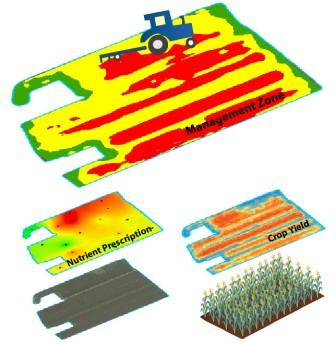

Implementation of Precision Agriculture involves the use of geospatial information to improve the understanding of the spatial heterogeneity of soil properties and crop performance. Accounting for local needs allows for optimizing the use of agricultural inputs to maximize profitability and to reduce the negative environmental impact. Geographic Information Systems (GIS) have been used to manage, process, and interpret multiple geospatial data layers. This tutorial was developed to provide step-by-step instructions on the way in which a popular, generic GIS software package could be used to process geospatial data for an agricultural field in Quebec. This tutorial was developed based on ESRI ArcGIS Pro. This software is popular within academic and government institutions around the world. Although this software is not specifically customized for agricultural data management, its powerful functionalities offer practical toolsets to meet the key requirements. All of the lessons are developed using a variety of input data files (i.e., spreadsheets, delimited text files, shape files, images, etc.) for an actual farm site located near Saint-Théodore-d'Acton (Quebec, Canada). Please e-mail viacheslav.adamchuk@mcgill.ca to obtain the username and password to access the data. It is assumed that the users of this tutorial are familiar with the basic functionalities within an ArcGIS environment. Nevertheless, the level of challenge to complete the designed tasks is moderate due to short descriptions and clear screenshots.
This tutorial consists of four separate lessons: 1) data management, 2) data interpolation, 3) spatial analysis, and 4) satellite imagery processing. The goal for the first lesson is to introduce the operational environment and conduct basic data management tasks, including clipping, projection, georeferencing and digitizing. The second lesson is designed to introduce the most essential step in precision agriculture data processing – data interpolation. The most extensive third lesson introduces different methods to develop application prescription maps for the main agricultural inputs, such as fertilizers and lime. Finally, the fourth section covers the use of satellite imagery to generate prescription maps. Each lesson is independent of the previous one and can be completed in any order.
Disclaimer:
Commercial products mentioned in this tutorial are for demonstration only and do not imply endorsement by the authors or the McGill University or the exclusion of other similar products.